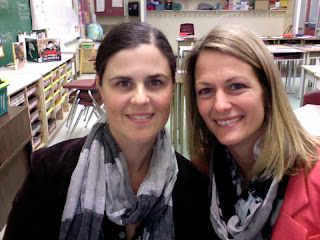 |
| Doodle Buddy app |
Sometimes poetry can be challenging because we push them to use figurative language, descriptive phrases and powerful vocabulary to describe their experiences. For those students, I like teaching blackout poetry, a type of found poetry, because they do not have to write the poem themselves or from their own experience.
 |
| Created on the iPad using Doodle Buddy |
Last year when I taught blackout poetry we used the camera in the iPads to take photos book pages, then Doodle Buddy, a drawing app, to choose words and create the blackout artwork.
This year we used Doodle Buddy again to create a draft of the poem, but the students decided that they wanted to complete the final product by hand. We have used iPads for several projects this year and they wanted a change and a chance to do go beyond what they could do artistically on the iPad.
As with last year, they took a photo of a page from a book and circled words and phrases. Using the iPads for their draft only gave them a chance to edit freely without having to erase on the hardcopy, thereby creating pencil marks and smudges. Once they felt ready and had conferenced with me, they were free to doodle and create on the copied page. The iPad allowed us to reduce the amount of photocopying necessary because students could try many different pages until the found one that worked for them.
 |
| Blackout poem draft on the iPad using Doodle Buddy |
Their final poems were all brief, with few lines in their stanzas, but many contained depth in the meaning or message.
Others were more simple or basic, but the students created interesting designs and patterns that are visually appealing.
This is always an enjoyable and creative project and the students like the art component. As you can see from the samples, their blackouts can go from merely interesting design, to images that relate to the meaning of their chosen words.


















